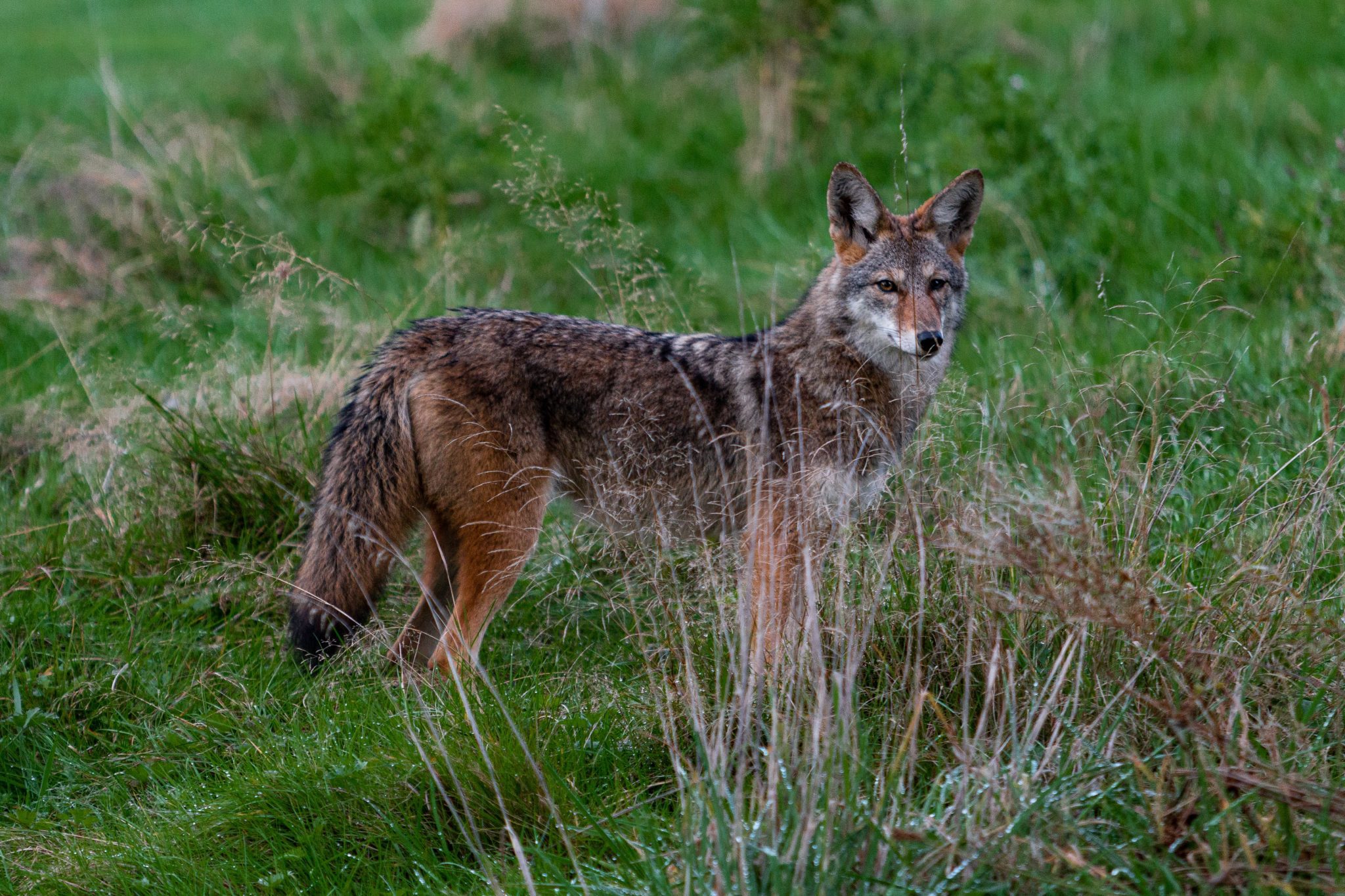
October 17, 2022 By Carol Britton Meyer
Although there have been a few encounters with, and sightings of, coyotes in the Liberty Pole area recently, there have been no confirmed attacks," Hingham Animal Control Officer Leslie Badger reported to the Select Board.
She explained that an encounter refers to coyotes crossing paths with a human or animal with no contact made. An attack involves a coyote contacting with a human or domestic pet resulting in an injury.
Two encounters occurred in the Liberty Pole neighborhood, both involving one human and one small dog. "There was no attack or contact, and the coyote was scared off," Badger said. "In both cases, the dog owners did a great job of keeping calm, maintaining distance, and alerting others for help."
In one case, the incident involved an adult walking a small dog, and in the other, a child walking a small dog alone before school.
"The coyote showed interest in the small dogs and got scared off by neighbors when the adult child and adult yelled and alerted neighbors," Badger said. "Coyotes and encounters are happening all over the state and beyond -- this is the time of year they are bulking up for the winter. This is why hazing them needs to happen all the time and why food sources need to be secured. Dogs should be on leash, especially in areas that experience regular coyote activity."
Badger, the Environmental Police, and Mass. Fish and Game spoke with the parties involved. "The coyote was interested in the small dogs, not the humans," Badger said. "Coyotes view small dogs as either prey or invading their territory."
Coyotes can weigh between 40 and 50 pounds, depending on their gender, age, and the season. While they are primarily carnivores, coyotes will also eat fruits and vegetables. "While once nocturnal, they have adjusted to be active at all hours," Badger said.
Between Jan. 1 and Oct. 8, here have been 38 reported sightings in Hingham, with no reported coyote attacks on humans during that time.
Badger reminds residents that hazing "moves a coyote out of an area and discourages undesirable behavior." This can include making oneself look bigger, yelling, spraying a hose, or honking a car horn.
Hazing must be repeated over time to change coyote behavior. "Do not spend time quietly taking photos or videos," Badger said. "This teaches coyotes not to be afraid of humans."
While coyotes hunt in the woods regularly, residents should be aware that they also seek easy food sources, such as bird feeders, trash cans, compost piles, gardens, chicken coops, and rabbit hutches.
Hingham Animal Control and the Environmental Police will continue monitoring sightings and activity.
Hunting season for coyotes opened Oct. 15. "This requires a specific license, like any other wild animal," according to Badger. "You cannot shoot within 500 feet of a dwelling -- so that makes it difficult in a lot of areas of Hingham. However, those interested in doing so can reach out to Mass. Fish and Game by calling or visiting their website for more information or hiring a PAC (Problem Animal Control) agent who specializes specifically in hunting or trapping coyotes."
Along with hunting, Badger said, "People need to be aware that it might solve the problem for a little while, but new coyotes will move into that territory -- especially if hazing doesn't happen and food sources aren’t secure."
Badger also explained that there are other reasons that hunting, trapping and euthanizing coyotes is not always the answer. "Doing so can have the opposite effect in thinning the pack if the wrong coyotes are taken out. That is why we officially and constantly stress how important it is to continuously haze them so that they are uncomfortable -- and to secure food sources as well."
Badger refers residents with questions about hunting coyotes to https://www.humanesociety.org/resources/why-killing-coyotes-doesnt-work.

